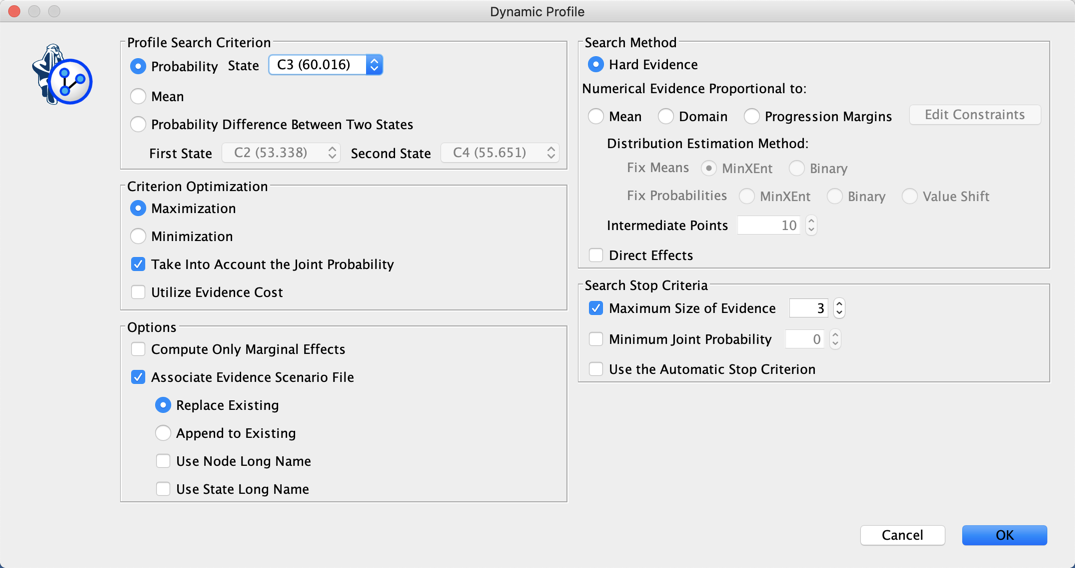Target Optimization — Dynamic Profile
Context
- This Target Dynamic Profile is an optimization tool that goes beyond finding an optimal set of values.
- Using a greedy search algorithm, the Target Dynamic Profile generates an ordered list of priorities leading towards achieving the optimization goal.
- As such, Target Dynamic Profile is a practical tool for business decisions support as it can directly answer questions, like “what are the top-3 initiative our business should pursue?”
- Target Dynamic Profile can search for Hard Evidence or Numerical Evidence to maximize or minimize
- The probability of a particular state of the Target Node.
- The mean value of the Target Node.
- The difference in probabilities between two states of the Target Node.
- Additionally, node-specific constraints can be provided along with overall constraints, such as Evidence Cost.
Update and New Features: Target State Optimization Report
As of version 9.0, the report describing the sequence of observations for optimizing a state of the Target Node comes with several new and renamed metrics:
- Optimal State (for optimization with Hard Evidence) and Posterior Value/Mean (for optimization with Numerical Evidence) have been renamed Evidence,
- Probability has been renamed Posterior Probability , where stands for the state to be optimized,
- Joint Probability has been renamed Marginal Likelihood , where represents the current set of evidence,
- Likelihood ,
- Bayes Factor : ,
- Generalized Bayes Factor .
Now, it is also possible to generate Histograms via the Report Button, with the Posterior Probability and the Likelihood .
Example
- Let’s utilize the network we have used for describing Cluster Interpretation with Most Relevant Explanations (MRE).

We use the Target Dynamic Profile to search for the best 3-piece of Hard Evidence that characterizes the men associated with C3.



Updated Feature: Target Mean Optimization Report
The report describing the sequence of observations for optimizing the Mean Value of the Target Node has also been slightly modified:
- Optimal State (for optimization with Hard Evidence) and Posterior Value/Mean (for optimization with Numerical Evidence) have been renamed Evidence,
- 95% Credible Interval has been renamed Confidence Interval, and the interval is represented instead of just the delta from the mean,
- Joint Probability has been renamed Marginal Likelihood , where represents the current set of evidence.
As of version 9.0, the Confidence Level can now be modified via Preferences

Example
Let’s use the previous network to illustrate this feature. Since we checked the option “Create Cluster with Ordered Numerical States” during Clustering, the numerical value of each cluster is the weighted average of the posterior mean values of the measurements.
We are looking for the best sequence of Numerical Evidence that maximizes the Mean Value of the Target Node.


